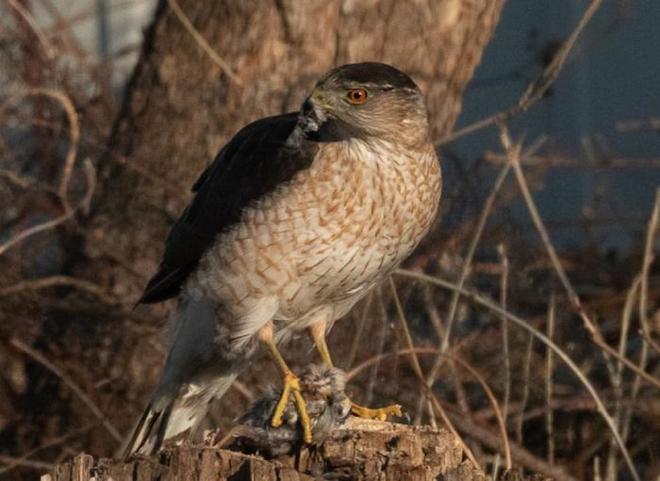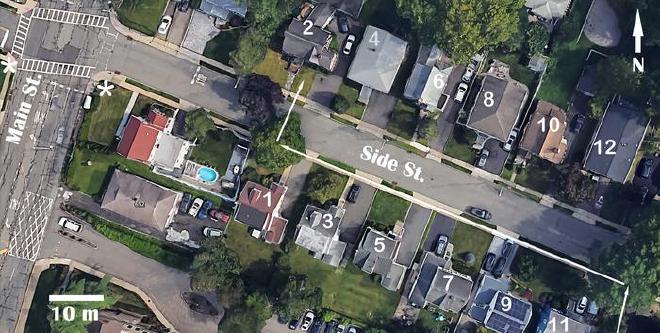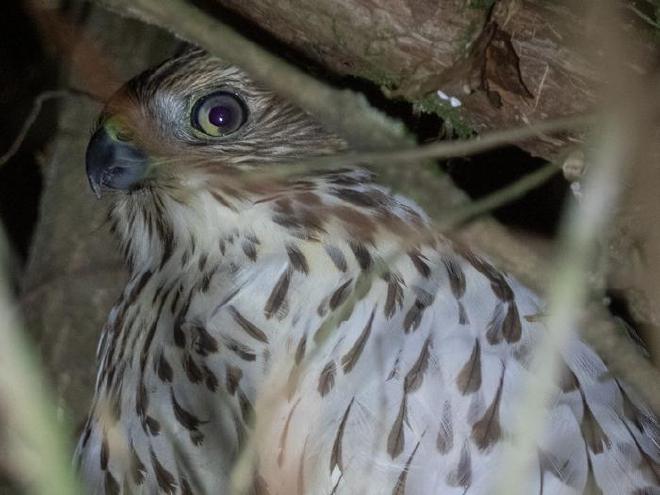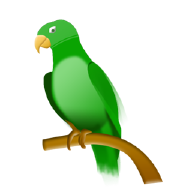

I never had a chance to return to the crater and still don’t know if that story was true, but it got me interested in animals’ perception of – and interactions with – human-made vehicles. Of course, the most common interaction is the animal becoming a roadkill, but it’s not the whole story. Many animals have learned to use cars for their own benefit, and birds seem to be particularly good at it. Crows drop walnuts, clams, even small vertebrates onto busy roads to have them killed and/or crushed by cars. Carrion-eating birds routinely monitor or patrol busy roads to immediately snatch roadkill. For example, many American highways are partitioned by families of ravens who watch them from dawn till dusk, waiting for meals from under wheels. Songbirds glean dead insects from cars and even nest in moving cars, trains and boats. Small birds use moving cars as mobile shelters from pursuing hawks, while hawks in one Ukrainian city have long been known to use moving cars and streetcars as cover to sneak up on their prey.
Hunt at the crosswalk #
So I’ve been keeping an eye for unusual bird-car play, and that’s why I noticed something interesting going on at a street intersection near my home. The intersection wasn’t particularly busy, and even during morning rush hour, when I was driving my daughter to school, there were usually only a few cars waiting for the green light. But sometimes a pedestrian pressed a button, and that caused the red light to last a lot longer, so the car queue became longer, too, stretching all the way to a small streetside tree with a particularly dense crown. When that happened, the streetlight produced a sound signal, letting blind people know that it was safe to cross.
One winter morning I was in my car waiting for the light to change and suddenly saw a Cooper’s hawk: it emerged from that small tree, flew very low above the sidewalk along the line of cars, made a sharp turn, crossed the street between the cars, and dove onto something near one of the houses.
A few days later -pointed Vladimir Dinets- I saw the same thing happen again and decided to investigate. It turned out that the house targeted by the hawk’s attacks was inhabited by a nice big family that liked to eat dinner in the front yard. Next morning their breadcrumbs and other leftovers attracted a small flock of birds – sparrows, doves, and sometimes starlings. That’s what the hawk was after.

Survival of the smartest? #
That meant that the hawk understood the connection between the sound and the eventual car queue length. The bird also had to have a good mental map of the place, because when the car queue reached its tree, the raptor could no longer see the place where its prey was and had to get there by memory.

It was an immature bird. Cooper’s hawks rarely nest in cities in our area but are common winter visitors. So the bird I was watching was almost certainly a migrant, having moved to the city just a few weeks earlier. And it had already figured out how to use traffic signals and patterns. To me it seemed very impressive.
Cooper’s hawk is on a rather short list of bird of prey species that have successfully adapted to life in cities. A city is a difficult and very dangerous habitat for any bird, but particularly for a large raptor specializing in live prey: you have to avoid windows, cars, utility wires, and countless other dangers while catching something to eat every day. I think my observations show that Cooper’s hawks manage to survive and thrive there, at least in part, by being very smart.
-
The article Street smarts: a remarkable adaptation in a city-wintering raptor, an observational study conducted by Dr Vladimir Dinets, was published in Frontiers in Ethology journal
-
When I copied and pasted the Dr Dinets’s editorial -2025-05-24-, the paper in FE has 2,727 views and 193 downloads.
-
Dr Dinets background: Psychology Department, University of Tennessee, Knoxville, TN, United States & Department of Mathematics and Computer Science, Rutgers University, Newark, NJ, United States
There is a Spanish version

